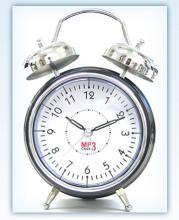Shopping Cart
What are involved in the cost of designing a Responsive website?
- Article
- March 7, 2015
As a rule of thumb, a Responsive Design website costs more than your average website to build and run, but creating an effective business website is more than a numbers game. When weighing up the costs, you need to keep in mind that a responsive website works much harder for you than your standard desktop-centric website.
Are you Ready for Google's New Mobile-Friendly Ranking Algorithm?
- Article
- February 3, 2015
On April 21, 2015, Google will begin rolling out a worldwide mobile-friendly algorithm update that will have a “significant impact” on mobile search results for mobile searchers.... ARE YOU READY?
In essence, if a website site does not pass Google’s mobile friendly test, there’s a real possibility that Google will send you fewer mobile search customers after April 21, 2015....
5 Simple Ways To Improve Your Website's Performance
- Article
- December 24, 2011
How To: Build a Successful Ecommerce Website
- Article
- December 24, 2011
How Does Loading Time Affect Your Online Store?
- Blog
- December 16, 2011
Loading time is an important part of any website’s user experience, but it is vital in eCommerce. Sometimes we can get caught in the aesthetics of a site and end up sacrificing speed. Unfortunately slow loading time, not bad design, is a leading cause of site abandonment. Check out KissMetric’s infographic below to learn more about the affects of a slow site. Then use our 3 tips to help better your load time and your conversion!
Check your Speed: The first thing you want to do is check your current speed. Luckily there are some great free tools that let you do this:
Rearrange your HTML Document: It’s important to place the Stylesheet References at the top of your HTML document and the script references at the Bottom.
Only two components per hostname are downloaded by browsers at a time. By placing the <head> of your HTML document at the top of your page, your site will load faster because it allows your pages to render the styles progressively. Thus by choosing to place the script references at the top, you block other mor essential elements from loading of the page.To quicken your load time, place script references before the closing
Tip: Avoid changing an images size using the height attributes of <img> elements in HTML. Use an image editor like PickNic to decrease load time.
Dynamic Content Blocks
- Email Marketing Feature
Free, Built-In Spam Checking
- Email Marketing Feature
Job Portal
- Website Design Product







